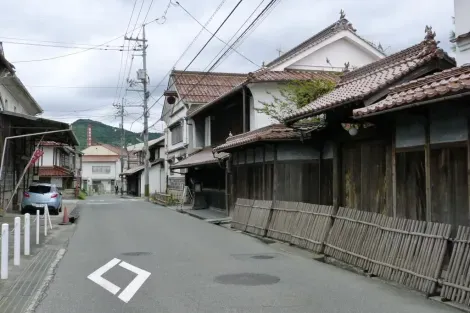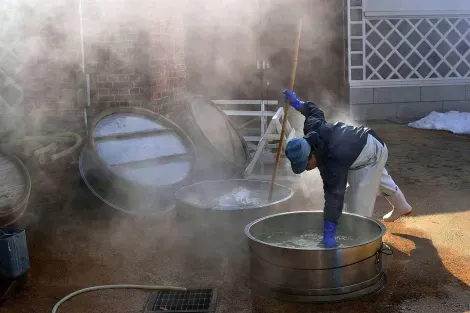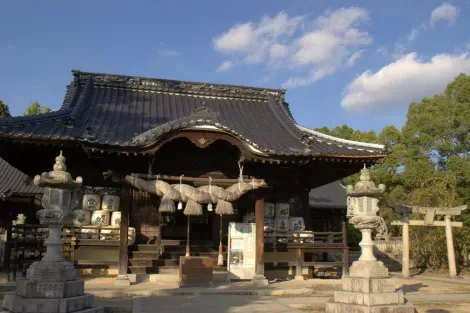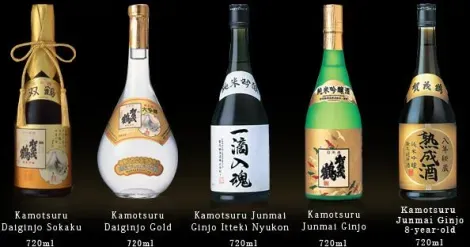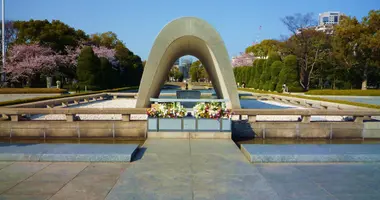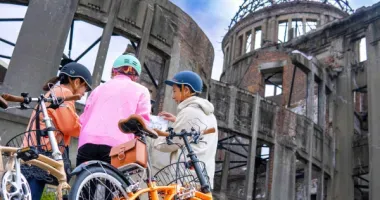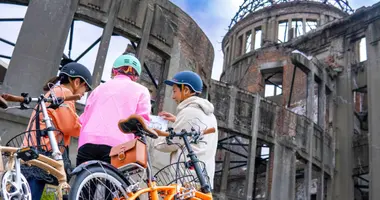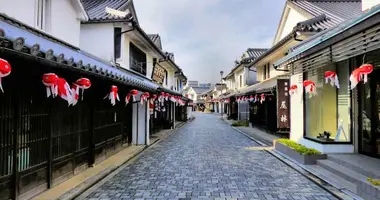Saijo, Japan's sake city
- Published on : 04/07/2024
- by : K.C.
- Youtube
Nestled in the heart of Hiroshima prefecture, Saijo is a small town with an international reputation in the art of sake brewing. Considered one of Japan's three major sake-producing districts, Saijo attracts thousands of visitors every year to discover its famous breweries and taste its legendary nectar. Its ideal climate, pure water springs and ancestral know-how make Saijo a true paradise for sake lovers. A blend of tradition and innovation, this town embodies Japanese excellence in rice fermentation and offers a unique cultural experience to visitors from all over the world.
Introducing Saijo: location and key data
Saijo is located around 40 minutes east of Hiroshima, in the new municipality of Higashi-hiroshima, created in 2005. The town lies on a high, basin-shaped plain, at an altitude of between 250 and 300 meters. This particular geographical situation provides an ideal microclimate for sake production, with cold, dry winters conducive to fermentation.
The city has around 150,000 inhabitants and covers an area of 635 km². The JR Sanyo line linking Hiroshima to Osaka runs through the town, making it easily accessible to visitors. The historic heart of Saijo, with its traditional breweries, is concentrated around JR Saijo station.
Saijo also benefits from the presence of pure underground springs, an essential element in the production of quality sake. These springs, known as "uchinuki", gush out naturally at several points in the town and are an integral part of its cultural heritage.
The history of Saijo and its sake-brewing tradition
The history of sake brewing in Saijo goes back over 350 years. The first breweries were established here around 1650, attracted by the exceptional quality of the water and the favorable climatic conditions. However, it was really from the Meiji era (1868-1912) onwards that the town experienced a remarkable boom in sake production.
A major turning point came in the middle of the Meiji era, when Sensaburo Miura, a native of nearby Akitsu, invented a new brewing technique called"ginjo-zukuri". This method revolutionized sake production and helped establish Saijo's reputation as a center of excellence in the field.
During the Taishō (1912-1926) and Shōwa (1926-1989) eras, Saijo was already renowned as a specialist sake region. It acquired the nickname"saketo saijo" (Saijo, sake town), a designation that endures to this day. In 1994, the opening of the National Brewing Research Institute in Saijo confirmed its status as Japan's sake capital.
The Saijo Sake Festival: a not-to-be-missed event
Every year, in early October, Saijo holds its famous Sake Festival, attracting over 200,000 visitors from all over Japan and beyond. The two-day event is an opportunity to discover and taste an incredible variety of sakes from all over the country.
The focal point of the festival is the sake hiroba, a large tasting area where, for around 1,600 yen (approx. €12.50), visitors can sample over 1,000 different sakes. Local breweries also have their own booths, offering visitors the chance to discover Saijo's finest sakes.
Although focused on sake, the festival is also a family event, with plenty of entertainment. There are parades of mikoshi (portable shrines), dance and music performances, as well as numerous local food stalls.
A particularly highlight of the festival is a visit to the Mitate temple, also known as "Matsuo". Before the festivities begin, brewers go there to pray and make offerings to Matsuo-sama, the god of sake, in order to receive his blessing.
Visit Saijo: breweries, temples and sake experiences
Even outside the festival period, Saijo offers many opportunities to discover its sake heritage. The town offers free guided tours every 10th of the month, focusing on Sakura dōri Street, nicknamed "the road of sake stores".
Eight breweries are open to the public, including the famous Komotsuru brewery, which has won several awards for the quality of its sake. These tours enable visitors to discover traditional brewing techniques and taste different types of sake directly at the production site.
Not-to-be-missed breweries include :
- Kamoizumi Brewery, pioneer of Junmai sake
- Kamotsuru brewery, renowned for its Daiginjo sake
- Nadagiku Shuzo brewery, offering interactive tours
Beyond the breweries, Saijo is home to several interesting sites linked to sake culture. The Shikoku Railway Culture Museum, located near the railway station, presents the history of transportation in the region and its link to the development of the sake industry. The Kōmyō-ji temple, designed by architect Tadao Ando, offers a striking contrast between tradition and modernity.
How to get to Saijo and practical information
To get to Saijo from Hiroshima, simply take the JR Sanyo Honsen line. The journey takes around 40 minutes and costs 580 yen (approx. €6). Saijo's main station is Iyo-Saijo, in the heart of the brewery district.
For those coming from further afield, the nearest airport is Hiroshima. From there, you can take a train or express bus to Saijo.
The best time to visit Saijo depends on your interests:
- October for the sake festival
- Winter (December to February) to watch the brewing process in action
- Spring (March-April) to enjoy the cherry blossoms
It's advisable to book your accommodation in advance, especially during the festival period. Several hotels and ryokan (traditional inns) are available in the city center, close to the breweries.
Saijo beyond sake: other attractions and points of interest
Although primarily known for its sake, Saijo offers other interesting attractions for visitors. The town is an excellent base for exploring the surrounding countryside, including Mount Ishizuchi, the highest mountain in western Japan.
Spirits lovers can also discover the Sakurao distillery, which produces quality gin and whisky. Take a guided tour to learn more about distillation techniques and taste local products.
For history buffs, Saijo is home to several Shikoku pilgrimage temples, including Yokomine-ji (no. 60) and Kōon-ji (no. 61). These temples offer a fascinating insight into Japanese spirituality.
Finally, the local gastronomy is also well worth a visit. In addition to sake, Saijo is famous for its eggplant, persimmons and grapes. Bishu nabe, a fondue-like dish cooked with local sake, is a specialty not to be missed.
Whether you're a sake connoisseur, a Japanese culture enthusiast or simply looking for an authentic off-the-beaten-track experience, Saijo will win you over with its unique charm and rich heritage. This small town perfectly embodies the blend of tradition and modernity that characterizes contemporary Japan.
Address, timetable & access
Address
Timetable
Saijo Sake Festival: every second weekend in OctoberAccess
From Hiroshima, take the JR Sanyo Honsen line.
Approx. 40 min journey: 580 yen (€6).
Saijo Sake Festival: 12-3 Saijo-honmachi, Higashihiroshima-shi 739-0011





